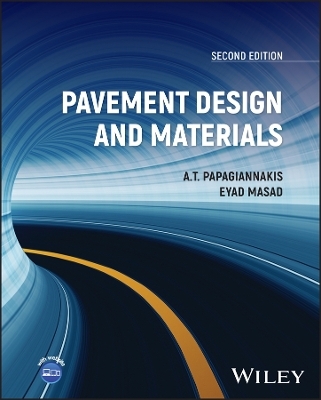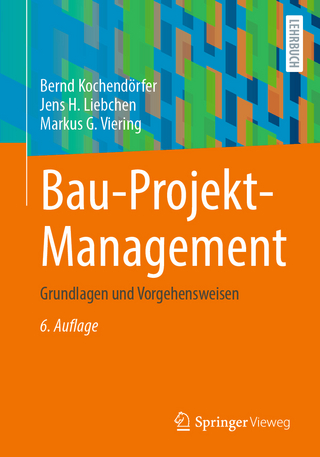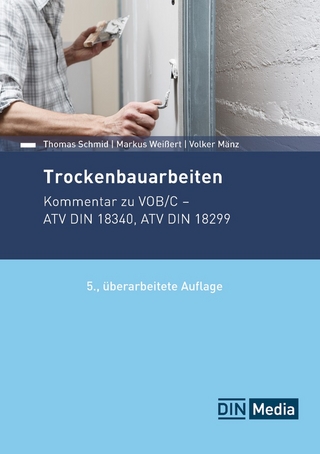
Pavement Design and Materials
John Wiley & Sons Inc (Verlag)
978-1-394-15017-5 (ISBN)
The newly revised and updated Second Edition of Pavement Design and Materials offers a comprehensive treatment of pavement materials, structural analysis, design, evaluation, and economic analysis of asphalt and portland concrete pavements.
Written by two highly qualified engineering professors with a wealth of experience in the field, Pavement Design and Materials provides readers with:
State-of-the-art techniques for material characterization, including a linear viscoelasticity primer
Methods and software for the analysis of flexible and ridgid pavements including the AASHTOWare Pavement ME Design
State-of-the-art pavement evaluation techniques including moduli backcalculation methods
Pavement economic analysis techniques including the most up-to-date user cost relationships.
The book companion website provides:
Solved examples in each chapter and the electronic files associated with them
An instructor solutions manual for the problems provided at the end of each chapter
PowerPoint presentations by chapter to facilitate lecture delivery
Pavement Design and Materials is an essential up-to-date textbook on the subject for upper-level undergraduate and graduate level courses on pavement materials and pavement design. It is also a valuable reference for practicing professional engineers involved in the various aspects of roadway pavement material selection and structural design.
A.T. Papagiannakis, PhD, P.E., F.ASCE, is a Professor of Civil Engineering in the School of Civil and Environmental Engineering & Construction Management at the University of Texas at San Antonio. He is the founder and past chair of the Pavements Committee of the Geo-Institute. Eyad Masad, PhD, P.E., Dist. M. ASCE, is a Professor of Civil Engineering in the Zachry Department of Civil and Environmental Engineering at Texas A&M University and the Mechanical Engineering Program of Texas A&M at Qatar. Both authors have extensive experiences in teaching, research, professional training, and consultancy in pavement engineering.
About the Authors xi
Preface xiii
About the Companion Website xv
1 Introduction 1
1.1 Pavement Types 1
1.2 Pavement Infrastructure Overview 5
1.3 Significance of Pavement Infrastructure to the National Economy 6
1.4 Funding Pavements 6
1.5 Engineering Pavements 10
1.6 Book Organization 11
References 12
Problems 13
2 Pavement Traffic Loading 15
2.1 Introduction 15
2.2 Summarizing Traffic Data for Pavement Design 31
2.3 Load Limits and Enforcement 41
References 45
Problems 46
3 Characterization of Pavement Subgrades and Bases 49
3.1 Mechanical Behavior 49
3.2 Resilient Response 51
3.3 Plastic Response 67
3.4 Aggregate Layer Indices 69
3.5 Aggregate and Soil Stabilization 75
References 77
Problems 80
4 Aggregates 83
4.1 Aggregate Types and Classifications 83
4.2 Physical Properties 86
4.3 Chemical Properties 106
4.4 Mechanical Properties 108
References 113
Problems 114
5 Asphalt Materials 117
5.1 Introduction 117
5.2 Chemical Composition of Asphalt Binders 118
5.3 Introduction to Rheology and Viscoelasticity 122
5.4 Asphalt Binder Properties 132
5.5 Asphalt Grades 142
5.6 Temperature Susceptibility 154
5.7 Asphalt Binder Modification 154
5.8 Asphalt Mixture Volumetric Analysis 155
5.9 Asphalt Mixture Properties 159
References 172
Problems 176
6 Concrete Materials 179
6.1 Cementitious Materials 179
6.2 Hydration 180
6.3 Chemical Admixtures 185
6.4 Properties of Cement, Paste, and Mortar 185
6.5 Properties of Portland Cement Concrete 187
References 196
Problems 197
7 Flexible Pavement Analysis 199
7.1 Introduction 199
7.2 Single-Layer Linear Elastic Solutions 200
7.3 Two-Layer Linear Elastic Solutions 205
7.4 Multilayer Linear Elastic Solutions 208
7.5 Axisymmetric Viscoelastic Solutions 212
7.6 Finite-Layer Viscoelastic Solutions 217
7.7 In Summary 221
References 221
Problems 223
8 Rigid Pavement Analysis 225
8.1 Introduction 225
8.2 Overview of the Elastic Theory on Plates 229
8.3 Environment-Induced Stresses 231
8.4 Load-Induced Stresses 240
8.5 Finite Element Method Solutions 251
References 263
Problems 264
9 Pavement Evaluation 269
9.1 Introduction 270
9.2 Serviceability 270
9.3 Structural Capacity 298
9.4 Surface Distress 324
9.5 Summarizing Pavement Distresses into an Index 331
9.6 Safety 338
References 344
Problems 349
10 Environmental Effects on Pavements 353
10.1 Water in Pavements 353
10.2 Heat in Pavements 372
10.3 In Summary 384
References 384
Problems 387
11 Structural Design of Flexible Pavements 389
11.1 AASHTO 1993 Design Method 389
11.2 Asphalt Institute Design Method 401
11.3 AASHTO 2020 Design Method 404
11.4 Summary 423
References 423
Problems 426
12 Structural Design of Rigid Pavements 429
12.1 Introduction 429
12.2 AASHTO 1993 Design Method 430
12.3 PCA Design Method 440
12.4 AASHTO 2020 Design Method 449
12.5 Summary 467
References 467
Problems 468
13 Pavement Rehabilitation 473
13.1 Introduction 474
13.2 AASHTO 1993 Flexible Pavement Overlay Design 477
13.3 Asphalt Institute Flexible Pavement Overlay Design 482
13.4 AASHTO 1993 Rigid Pavement Overlay Design 482
13.5 AASHTO 2020 Overlay Design Method 487
References 491
Problems 492
14 Economic Analysis of Pavements 495
14.1 Introduction 495
14.2 Benefit/Cost Ratio Method 497
14.3 Cost Components in Pavement LCCA 500
14.4 Agency Costs 500
14.5 Vehicle Operating Costs 503
14.6 Non-Vehicle Operating Costs 522
References 533
Problems 537
A A Primer of Linear Viscoelasticity 541
A.1 LVE Models in the Time Domain 541
A.2 LVE Models in the Frequency Domain 547
A.3 Fitting LVE Models to Experimental Data 550
B MEPD User’s Manual 557
Preface 557
List of Abbreviations 557
B.1 MEPD Software Overview 559
B.2 General Information Inputs 571
B.3 Performance Criteria and Reliability Inputs 573
B.4 Material Inputs 575
B.5 Existing Pavement Condition Inputs 589
B.6 Traffic Inputs 594
B.7 Running MEPD and Interpreting the Results 606
References 608
C MEPD Design Examples 611
Index 625
| Erscheinungsdatum | 21.08.2024 |
|---|---|
| Verlagsort | New York |
| Sprache | englisch |
| Maße | 196 x 236 mm |
| Gewicht | 1066 g |
| Themenwelt | Technik ► Bauwesen |
| Technik ► Fahrzeugbau / Schiffbau | |
| ISBN-10 | 1-394-15017-2 / 1394150172 |
| ISBN-13 | 978-1-394-15017-5 / 9781394150175 |
| Zustand | Neuware |
| Informationen gemäß Produktsicherheitsverordnung (GPSR) | |
| Haben Sie eine Frage zum Produkt? |
aus dem Bereich


